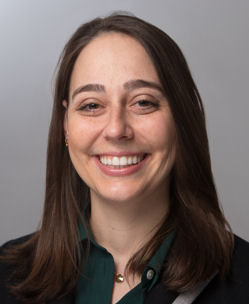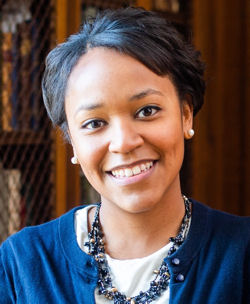“Ooh, she's a real treat,” was the first thing I heard about Judith when I joined her team as a student doctor. We met several months into her diagnosis of Crohn disease. Abdominal discomfort had quickly turned into infections, fistulas, and procedures. She was refusing parental nutrition, and her reputation for being “difficult” preceded her on the wards. I jotted down her overnight labs and transcribed highlights from various consult notes. In my rush to prepare for rounds, getting to know my patient was a lower priority than knowing her objective results.
As third-year students, we realize the limits of being pulled in so many directions—electronic notes, exams, relationships—and still being the provider who we envisioned becoming. We see ourselves in our residents and attendings, worrying whether we will become like the ones we admire or fall prey to our own temptations to label patients “difficult” and treat them without truly caring for them.
In trying to reconcile our own aspirations with our limitations, we hope to create a tool to guide us when we find ourselves in those gray moments. Mnemonics become scripture by third year. They help us to remember things we know but, under pressure or in a rush, may forget. We know that we entered medical school with the intention of helping people. We know that we want to be kind, empathetic future physicians. We also now know that our best intentions may be forgotten or glossed over in the fog of the day to day. Drawing inspiration from a lecture given to us by the president of the Mind and Life Institute and the University of Virginia's Compassionate Care Initiative, we created our own mnemonic to FOAM-IN.
F—feel the foam as you lather with awareness, focus on what you are doing.
O—open the door, notice the experience of walking into the patient room.
A—acknowledge that you are caring for a person who has a full life.
M—meet the patient and the family where they are.
I—inhale; take a couple of slow, deep breaths; and tune in before saying anything.
N—notice and navigate the patient's and family's concerns with calm clarity and heartfelt presence.
FOAM-IN is named after the ethyl alcohol–based, hand-sanitizing activity that we perform before and after each patient interaction. The hospital jargon for using the ubiquitous gel is “foaming-in.” The idea is to take this required moment as an opportunity to be present and unassuming before entering; to let go of the catalog of other ongoing tasks and, ultimately, foster connection between the patient and provider. It is a moment to begin anew for every patient, every time.
Eight days into Judith's hunger strike, I decided to consciously FOAM-IN. We first started chatting about how much better she was looking after the second week of antibiotics. She then told me about her family and her life before her disease. Then I said to her, without expectations or judgment, “You are being an incredible advocate for yourself.” Because in that moment, I understood the source of her resistance: She felt our treatments were slowly stripping away her independence. Tears fell down her face. We exchanged smiles, and I left for the evening.
We remind ourselves to FOAM-IN while we foam-in. Remaining present during patient encounters enhances our learning by illuminating the person behind the disease process and making the burden of illness more real. Remembering to FOAM-IN when taking a history for Arthur with advanced Lewy body dementia led us to find his music on YouTube after his family mentioned that he was an accomplished jazz musician. The “pneumonia in 201” becomes Betsy the milliner with a cat named Romeow, and the “carotid dissection in the ED” transforms into George the carpenter.
When you FOAM-IN, you will not always learn something fascinating or experience a moment of raw human emotion like the tears Judith shared. Patients may just be having a horrible day and in need of care. In those encounters, we remember that to FOAM-IN and to be there for them is its own reward.
We believe that expert clinicians perform the basics of FOAM-IN automatically and instinctively, but building those habits while we are still in training may require extra attention. Any practice that brings you closer to your patient and yourself will never fail to remind you of the joy and optimism that brought you along the path of a life in medicine. We hope that the next time you turn to a mnemonic in a time of need, you remember to FOAM-IN.
Acknowledgment:
Special thanks to Jay Baruch, MD, for his mentorship, and Susan Bauer-Wu, PhD, for her inspiration.


Madeline Wozniak, BS, and Denise Marte, BS
Warren Alpert Medical School at Brown University

